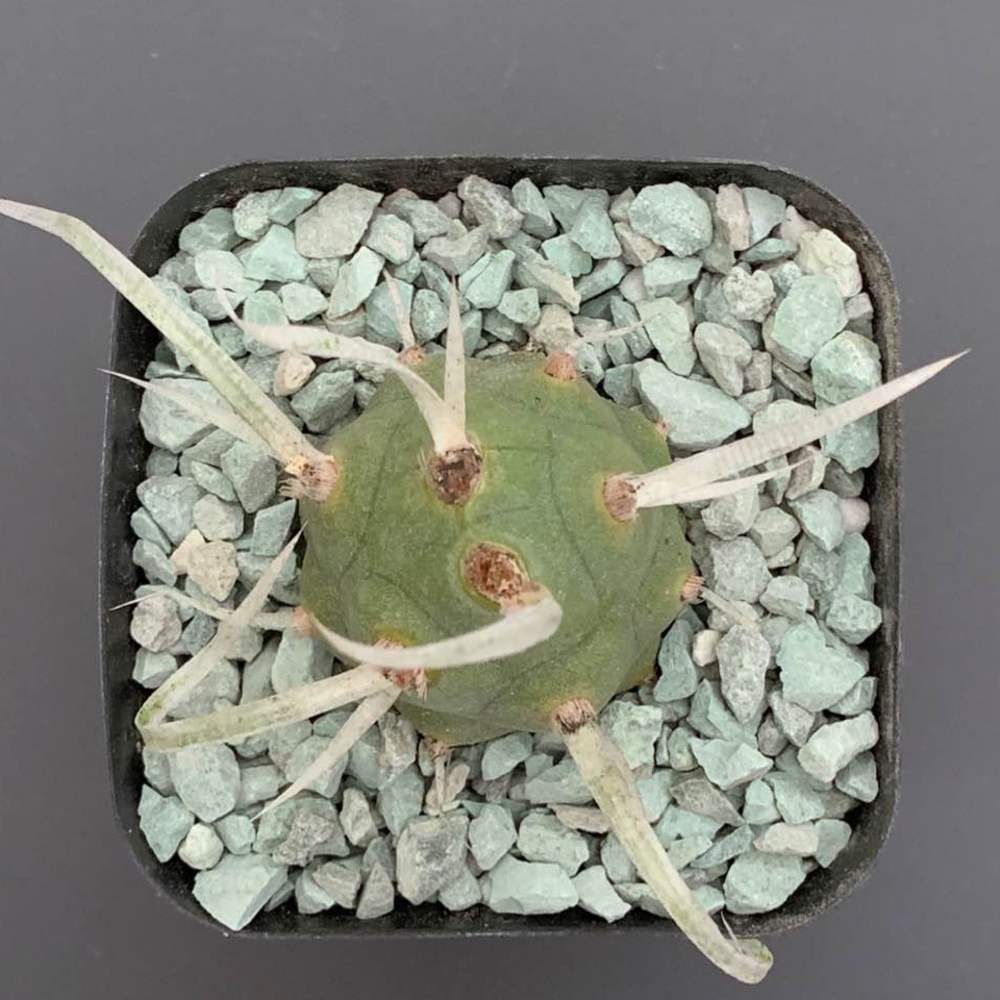植物经验
详细说明
My paper spine cactus (Tephrocactus articulatus var. papyracanthus) looks like an alien space invader in my xeriscape, and that’s why I love it so much. As a member of the opuntia genus of cacti, this specimen is drought-tolerant, loves the sun, and is easy to propagate.
New segment growth
Recently, in the warm month of May in Phoenix, Arizona, my paper spine cactus produced fresh new growth. Each new segment emerges from the cactus aereoles, which protect the new growth with a circle of defensive glochids and one large papery spine.
The new segments seem to be reaching out to the warm sun as they poke through the old segments. Soon, they will reach maturity, and take on the mature pine-cone shape that is typical with this cactus.
Immature spines are stiff and sharp
Sometimes, the new growth emerges so fast that the tougher surrounding skin splits open. To protect the new growth, the spines on the developing pine-cone shaped segment are actually stiffer and sharper than the larger, paper-like spines on a mature segment.
Experience the paper spine cactus
If you’re intrigued by the unique look, shape, and growth habit of the paper spine cactus, you can grow your own no matter where you live. This cactus does well in a container, and does especially well when planted in the ground.
However, to encourage the best growth for your paper spine cactus, here are a few things to consider.
Plant in well-draining soil
First, be sure to use soil that drains well. If you are using a container, be sure it has drain holes. Also, mix some sand in with your potting soil. Just like most cacti, the paper spine cactus will rot if its roots are too moist.
I have my specimen planted in typical southern Arizona, clay-based soil that I amended with sand and coffee grounds.
Cacti potting soil
Plant in full sun
For the best health, most vigorous growth, and abundant flower blooms, this cactus needs full sun. In fact, more sun will spur more vigorous growth and abundant flowers in the early summer months.
During the early morning hours, my paper spine cactus is partially shaded by a nearby Canary Island date palm tree. But, for the rest of the day, it receives at least 10 hours of full sun.
If you grow your cactus in a container, place it where it can soak up the sun’s rays. During the summer, you might even place the container out in your landscape. There, the sun’s heat will spur new, vigorous growth even in a confined container.
Lack of sun can make the segment stems weak, and prone to break off easily. Full sun will stimulate strong stem growth. The segments on my paper spine cactus do not break off easily.
Water less, but water deeply
Before watering, make sure the soil around the roots has completely dried. Then, give the cactus a deep soaking of water to reach all the roots and beyond. With all my drought-tolerant plants, I try and water beyond the root ball to tease them out beyond the base.
Water once each month during the winter months. As summer approaches and the days get longer, water twice each month. During the blazing heat of summer, I water my paper spine cactus once each week. However, I always check to be sure the soil is completely dry at least 4 inches down.
Too much water can quickly cause root rot with this cactus. In addition, excess water will ironically make the segment stems weaker and more prone to break off. For stronger stems, water less, but water deeply.
Like most cacti, the paper spine cactus can survive long periods without water. That characteristic makes it a perfect plant for a container inside your home or outside in your xeriscape.
Easily propagate your paper spine cactus
Just like all opuntia cacti, the paper spine cactus is easy to propagate.
First, break off a stem. Then, slice off the thin part of the stem to expose more flesh.
Afterwards, plant the cutting directly in dry soil or in your container with a sandy mix of potting soil. Many cacti gardeners advise waiting a week or two until the cutting has formed a callus over the flesh before planting.
However, I have had almost a 100% success rate by immediately planting my cacti cuttings in dry, well-draining soil. They have quickly rooted all across the exposed flesh of the segment.
You might try both methods — take one segment and place it in the shade for a couple weeks until the flesh calluses, and take another fresh segment and plant immediately.
New segment growth
Recently, in the warm month of May in Phoenix, Arizona, my paper spine cactus produced fresh new growth. Each new segment emerges from the cactus aereoles, which protect the new growth with a circle of defensive glochids and one large papery spine.
The new segments seem to be reaching out to the warm sun as they poke through the old segments. Soon, they will reach maturity, and take on the mature pine-cone shape that is typical with this cactus.
Immature spines are stiff and sharp
Sometimes, the new growth emerges so fast that the tougher surrounding skin splits open. To protect the new growth, the spines on the developing pine-cone shaped segment are actually stiffer and sharper than the larger, paper-like spines on a mature segment.
Experience the paper spine cactus
If you’re intrigued by the unique look, shape, and growth habit of the paper spine cactus, you can grow your own no matter where you live. This cactus does well in a container, and does especially well when planted in the ground.
However, to encourage the best growth for your paper spine cactus, here are a few things to consider.
Plant in well-draining soil
First, be sure to use soil that drains well. If you are using a container, be sure it has drain holes. Also, mix some sand in with your potting soil. Just like most cacti, the paper spine cactus will rot if its roots are too moist.
I have my specimen planted in typical southern Arizona, clay-based soil that I amended with sand and coffee grounds.
Cacti potting soil
Plant in full sun
For the best health, most vigorous growth, and abundant flower blooms, this cactus needs full sun. In fact, more sun will spur more vigorous growth and abundant flowers in the early summer months.
During the early morning hours, my paper spine cactus is partially shaded by a nearby Canary Island date palm tree. But, for the rest of the day, it receives at least 10 hours of full sun.
If you grow your cactus in a container, place it where it can soak up the sun’s rays. During the summer, you might even place the container out in your landscape. There, the sun’s heat will spur new, vigorous growth even in a confined container.
Lack of sun can make the segment stems weak, and prone to break off easily. Full sun will stimulate strong stem growth. The segments on my paper spine cactus do not break off easily.
Water less, but water deeply
Before watering, make sure the soil around the roots has completely dried. Then, give the cactus a deep soaking of water to reach all the roots and beyond. With all my drought-tolerant plants, I try and water beyond the root ball to tease them out beyond the base.
Water once each month during the winter months. As summer approaches and the days get longer, water twice each month. During the blazing heat of summer, I water my paper spine cactus once each week. However, I always check to be sure the soil is completely dry at least 4 inches down.
Too much water can quickly cause root rot with this cactus. In addition, excess water will ironically make the segment stems weaker and more prone to break off. For stronger stems, water less, but water deeply.
Like most cacti, the paper spine cactus can survive long periods without water. That characteristic makes it a perfect plant for a container inside your home or outside in your xeriscape.
Easily propagate your paper spine cactus
Just like all opuntia cacti, the paper spine cactus is easy to propagate.
First, break off a stem. Then, slice off the thin part of the stem to expose more flesh.
Afterwards, plant the cutting directly in dry soil or in your container with a sandy mix of potting soil. Many cacti gardeners advise waiting a week or two until the cutting has formed a callus over the flesh before planting.
However, I have had almost a 100% success rate by immediately planting my cacti cuttings in dry, well-draining soil. They have quickly rooted all across the exposed flesh of the segment.
You might try both methods — take one segment and place it in the shade for a couple weeks until the flesh calluses, and take another fresh segment and plant immediately.
花相册 (7)
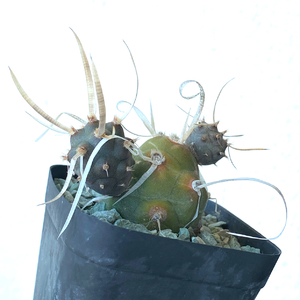
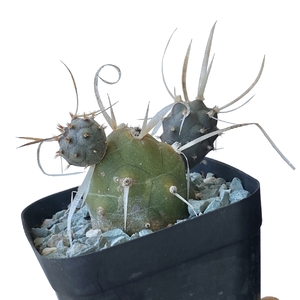
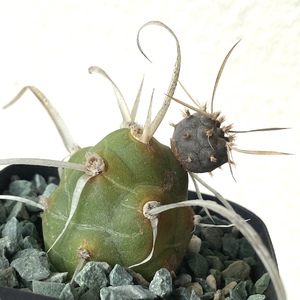
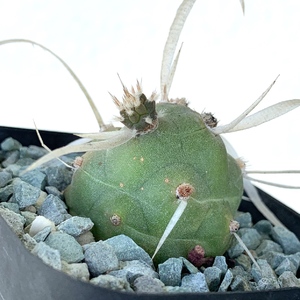

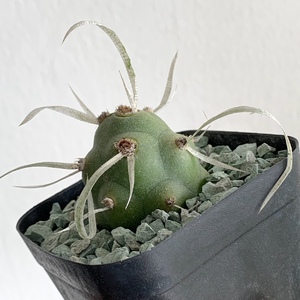
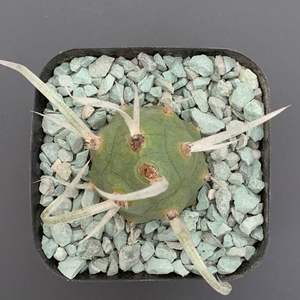
kensong
2020年01月24日

Babies growing well.




kensong
2019年10月13日

Baby growing well. Wondering if they can be separated to repot.


kensong
2019年05月11日

Looks like a baby just sprouted.




kensong
2018年12月12日

This is my first growing diary. From Chatchak Market






